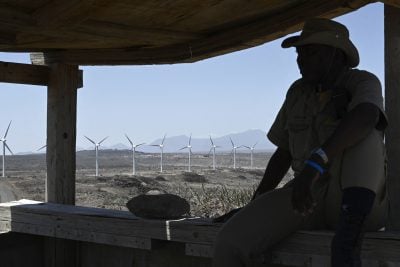The energy transition integrating renewable energies into the grid is a reality that is unfolding globally. This can be observed at different rates and scales according to the countries, but the constant increase in demand and the continuous drop in the prices of these technologies implies that renewable energies will constitute the basis of the power supply to the electrical networks in the future.
It is, in fact, more of a revolution than a transition, given the rapidity with which the share of renewable energy is growing today, and the fall already noted in the prices of the renewable kWh produced. The same goes for Africa, and in particular North and West Africa, where Egypt, Morocco and Senegal have already embarked on the introduction of solar energy and wind turbines.
However, since renewable energies are intermittent by nature, they generate instability on electricity networks, posing enormous difficulties for operators, and potentially for consumers as a result.
Non-flexible production capacities, typically coal-fired, will therefore have to be replaced by much more flexible means of production. We will have to rely on a mix of energy storage solutions and engine-based technologies, which provide the best response times, to effectively adapt to sudden excess or shortfall in renewable production.
Interestingly, the Covid-19 crisis and its confinement phases give us a taste of what awaits us in 2030 in Africa. We observe in real time a full-scale simulation of the effects of a majority of renewables in the energy production mix. As demand for electricity in Europe has fallen due to lockdown measures, the generation of renewable energy continues to be produced at full speed.
As a result, energy sources such as coal have become the adjustment variable and are stopped whenever possible, which very significantly increases the relative importance of renewable energies in the mix.
For example, in the United Kingdom, over the March 23-May 24 2020 period, the share of renewables reached 41% of production, while during the same period in 2019, the figure was 30%. At the same time, the share of electricity produced by coal-fired power plants fell by 46%. Since April 10, all the coal plants have been shut down.
In Germany, over the same period, the share of renewable energy reached 60%, up 12%, while the share of electricity produced by coal-fired power plants fell by 52%. At the end of April, the share of renewables reached almost 80% several days in a row, when at the same time the weather was nice and windy. For 3 days, Germany even had to pay to massively export its excess electricity, unable to adjust its “inflexible” production tool.
Finding equilibrium
The main lesson to learn? The speed of the energy transition imposes additional criteria in investment choices to ensure the sustainability and the best economic profitability of a country’s energy mix.
The equilibrium between the types of technologies in the energy mix, the production costs and consumption has changed radically with the massive introduction of renewable energies. The production price of a kWh is only optimised by cleverly combining the different technologies for the best performance, the least risk of interruption, whatever the development consumption.
Forecasts show that by 2050, solar PV would represent over 50% of total electricity production in Africa. Renewable energies are – and will remain – affordable and reliable; they will be combined with flexible quick-start energy generation resources such as engines, which allow them to operate to meet peaks in demand, and to compensate for intermittence.
These engines also provide additional security, because they can work just as well on gas as on fuel in the event of a gas supply shortage, but also ultimately on bio-and synthetic fuels when these become economically competitive and widely available.
Introducing a large part of flexibility in our electricity production is not an option: without flexibility, the energy revolution will not take place.
Ville Rimali is director, growth and development, at Wärtsilä.
Want to continue reading? Subscribe today.
You've read all your free articles for this month! Subscribe now to enjoy full access to our content.
Digital Monthly
£8.00 / month
Receive full unlimited access to our articles, opinions, podcasts and more.
Digital Yearly
£70.00 / year
Our best value offer - save £26 and gain access to all of our digital content for an entire year!
 Sign in with Google
Sign in with Google 



